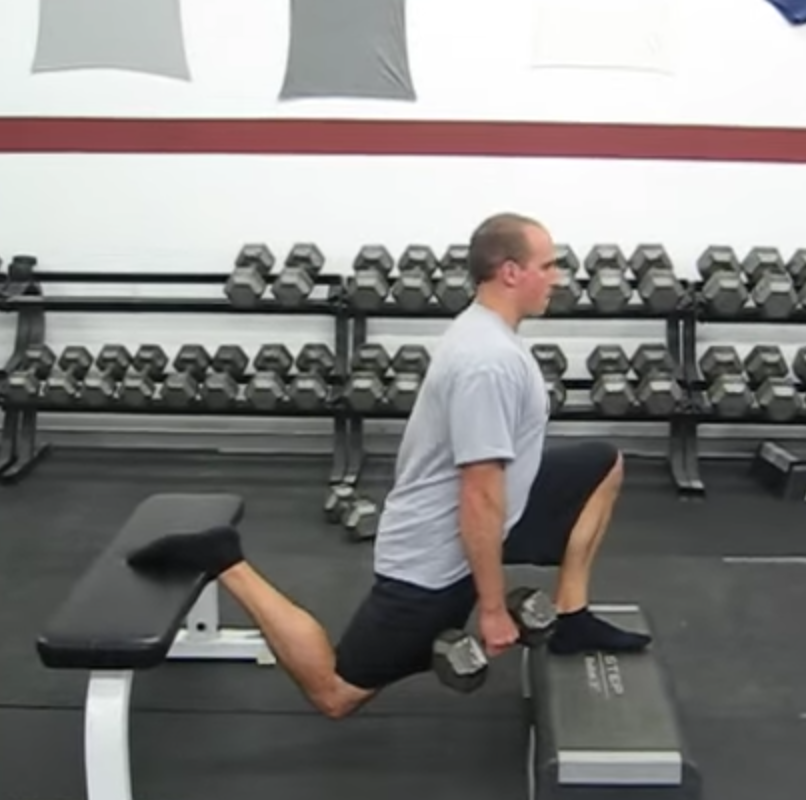Lower- Body Excercises
By: Eric Cressey
Coaches and players commonly express concerns about in-season strength training programs because they’re worried that certain exercises might create a lot of soreness. It’s a valid concern, when you consider the significant effect soreness can have on athletes’ performance both physically and mentally. As such, we need to make sure that we select exercises that provide a good training effect, but won’t necessarily create a lot of soreness for an athlete.
The first important recognition on this front needs to be that familiarity with an exercise will minimize soreness. If an athlete has already done an exercise in the previous 7-10 days, it shouldn’t make him very sore (if at all). This is one reason that I like to introduce new exercises in the week prior to the start of the season; we can “ride out” those drills through the first 1-2 months of the season without worrying about soreness.
Of course, once you get past that initial stage, it’s a good idea to change things up so that athletes will continue to progress and not get bored with the program. One way to introduce new exercises without creating soreness is to minimize eccentric stress; so, essentially, you’re selecting exercises that don’t have a big deceleration (lowering) component. This is tricky, as most athletic injuries occur from poor eccentric control (both acutely and chronically). So, we can’t remove them completely, but we can shoot for a 50/50 split. To that end, we’ll typically introduce our more intensive lower-body eccentric strength exercises (e.g., Bulgarian Split Squats) on a day when an athlete can afford to be sore (e.g., the day after a pitcher starts) for a few days. If that isn’t a luxury, we’ll simply go much lighter in the first week of that new program.
With all that in mind, here are six exercises I like to use during the season with many of our athletes.
- Step-up Variations – I’m normally not a big fan of step-ups for off-season programs because they don’t offer a significant deceleration component, but they can be useful in-season when you’re trying to keep soreness to a minimum. Anterior-Loaded Barbell Step-ups are a favorite because they still afford you the benefits of axial loading without squatting an athlete.
- Deadlift Variations – It goes without saying that I’m a huge fan of the deadlift, as deadlift variations afford a host of benefits from strength, power, and postural perspectives. They’re also great because there isn’t much of an eccentric component unless you’re doing stiff-leg deadlift variations. With that in mind, we utilize predominantly trap bar and sumo deadlift variations in-season.
- Anderson Squats (Paused Squats from Pins) – As with the deadlift, this is a predominantly concentric movement. Explode up from the pins, and don’t worry about a long eccentric component (which could create soreness). Just be sure to only do 1-3 reps per set.
- Sled Pushing/Dragging – A lot of people view sled work as purely for metabolically conditioning but the truth is that it actually makes for a great concentric-only strength exercise while helping to enhance mobility (assuming you cue an athlete through full hip extension on forward pushing/dragging variations). Just make sure to keep the load heavy and distance short.
- 1-leg Hip Thrusts off Bench – This is a great “halfway” exercise with respect to eccentric stress. For some reason, even if you lower under a ton of control and with additional load (we drape chains over the hips), this exercise still won’t make you sore.
- 1-arm DB Bulgarian Split Squats from Deficit – Adding an asymmetrical load a unilateral (one-leg) exercise allows you to get a training effect without a ton of resistance (especially with the increased range of motion provided by the deficit). It’ll still create some soreness, but it’s another one of those “middle of the road” exercises where the soreness isn’t as bad as you’d expect, especially if you phase it in a bit lighter in week 1 of the new training program.
Pat: As you can see, Eric puts a lot of time and energy into creating detailed programs that are both backed by science and molded by anecdotal experience. The High Performance Handbook is one such example, and is a versatile program that can be used to accomplish a variety of different athletic and fitness goals. It’s also on sale this week for $50 off; click here to check it out.



0 Comments for “6 Lower-Body Exercises that Won’t Make Your Athletes Sore During the Season”